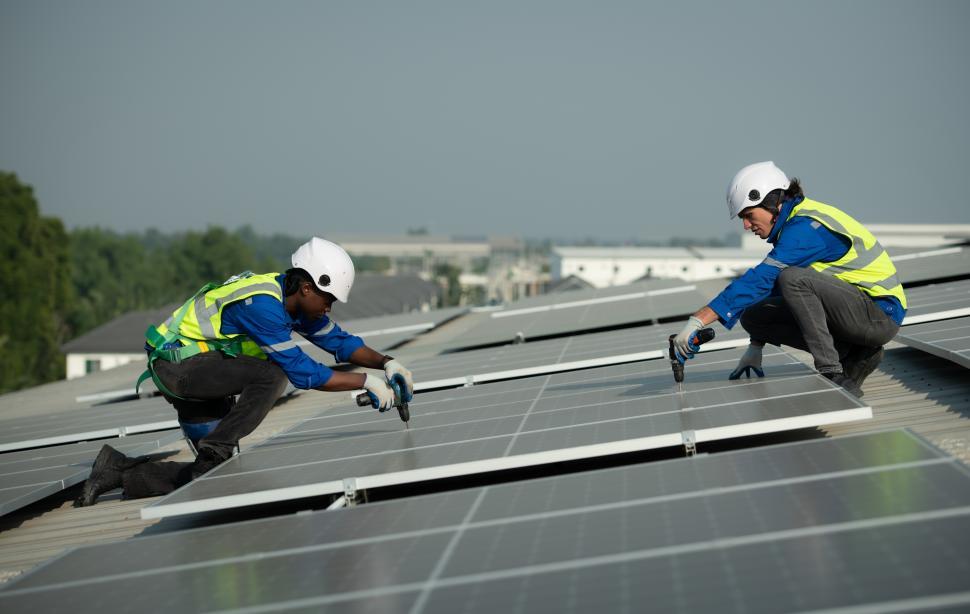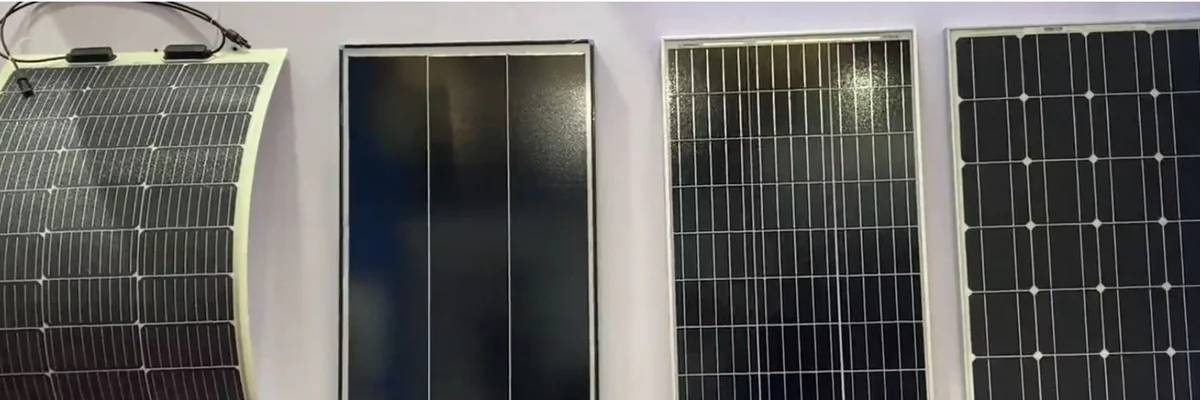Introduction
Solar panels are the core of any photovoltaic (PV) system. Selecting the right type of panel is crucial for efficiency, cost-effectiveness, and long-term performance. This guide explores the three main types of solar panels available today: monocrystalline, polycrystalline, and thin-film.
Monocrystalline Solar Panels
Monocrystalline panels are made from a single, continuous crystal structure. They are typically black in color and offer the highest efficiency among the three types, often ranging between 18-22%.
Advantages:
- High efficiency, ideal for limited roof space.
- Long lifespan, often 25+ years.
- Better performance in low-light conditions.
Disadvantages:
- More expensive than polycrystalline or thin-film panels.
- Waste material during production is higher.
Polycrystalline Solar Panels
Polycrystalline panels are made from multiple silicon crystals melted together. They are usually blue in color and slightly less efficient than monocrystalline panels, typically around 15-17%.
Advantages:
- Lower cost compared to monocrystalline panels.
- Simple manufacturing process with less waste.
Disadvantages:
- Lower efficiency, requiring more roof space for the same output.
- Performance drops slightly more in high temperatures.
Thin-Film Solar Panels
Thin-film panels are made by depositing a thin layer of photovoltaic material onto a substrate such as glass, plastic, or metal. They are lightweight and flexible, often used in unconventional installations.
Advantages:
- Flexible and lightweight, suitable for unusual surfaces.
- Lower upfront cost in some cases.
- Uniform appearance, often preferred for aesthetics.
Disadvantages:
- Lower efficiency (10-13%), requiring more surface area.
- Shorter lifespan compared to crystalline panels.
- Higher degradation rate over time.
Comparison and Choosing the Right Panel
When choosing solar panels, consider:
- Available roof space: Monocrystalline panels are best for limited space.
- Budget: Polycrystalline panels are more cost-effective upfront.
- Design and aesthetics: Thin-film panels may be chosen for flexible or decorative installations.
- Energy needs: Higher efficiency panels reduce the number of units needed for your desired output.
Installation Considerations
Panel type affects installation techniques. Monocrystalline and polycrystalline panels are mounted on racks with fixed tilt angles or tracking systems. Thin-film panels may be adhered directly to roofing surfaces or integrated into building materials. Roof strength, shading, and orientation must all be evaluated during planning.
Maintenance and Lifespan
All panel types require minimal maintenance, usually just periodic cleaning. Efficiency degradation over time varies:
- Monocrystalline: ~0.5% per year
- Polycrystalline: ~0.7% per year
- Thin-film: ~1% per year
Most high-quality panels come with 25-year performance warranties.
Financial Considerations
Cost per watt varies between panel types. Monocrystalline is more expensive upfront but often provides better long-term value due to higher efficiency and energy production. Polycrystalline offers a balance between cost and performance. Thin-film may be cheaper for large surface areas but requires more space to achieve the same output.
Environmental Impact
All solar panels provide clean energy. Monocrystalline panels have higher silicon purity and slightly higher energy footprint during production. Polycrystalline panels use less energy during production. Thin-film panels may use rare materials depending on type (e.g., cadmium telluride), so disposal and recycling are considerations.
Technological Advances
Solar technology continues to improve. Bifacial panels capture sunlight from both sides, and PERC (Passivated Emitter Rear Contact) panels enhance efficiency. Manufacturers are producing more durable, lighter, and aesthetically pleasing panels.
Conclusion
Choosing the right solar panel type depends on your budget, available space, energy needs, and design preferences. Understanding the advantages and limitations of monocrystalline, polycrystalline, and thin-film panels ensures a system optimized for efficiency, performance, and long-term value.


